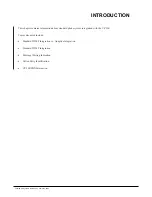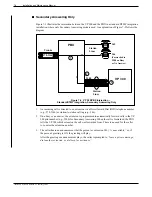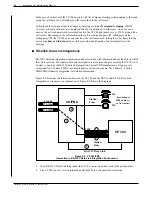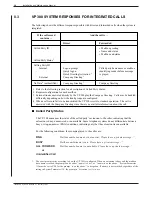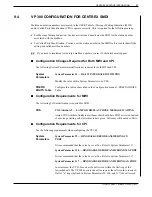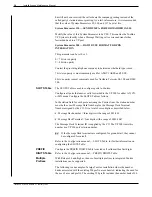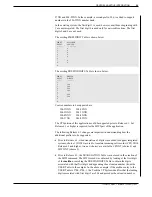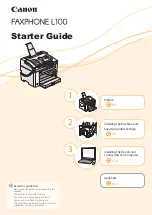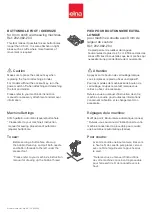
■
Calling Party Identification
With Calling Party Identification, the VP 300 distinguishes between direct and forwarded calls as well
as between internal and external calls, if this information is provided by the PBX/CO. In the following
descriptions of integrated call processing, operation that has not been customized is described.
■
Direct Calls
For direct calls, if the calling party’s identification is provided in the call record, the VP 300
responds differently for internal and external calls.
Internal Callers
Internal callers are prompted to log on to their mailbox or press
0
for
assistance. Internal callers may also use the Quick Logon or Quick Greeting
Activation features.
External Callers
External callers hear the Company Greeting or may have some other
response configured. Trunks handling external calls may be divided into
different groups for appropriate handling.
■
Forwarded Calls
When an internal or external caller reaches an unavailable extension that is forwarded to the VP
300, the caller is directed to the called party’s mailbox.
If the person called has recorded a greeting, and the greeting is turned ON, the caller hears the
greeting and then is prompted to leave a message or dial
0
for assistance. If the person called has
a name recorded for the mailbox, and has no greeting recorded, or if the greeting is turned OFF,
the caller hears “(name)” and the status of the call, followed by a prompt to leave a message.
If there are no personalized responses for a mailbox, the caller hears “(mailbox number)” and the
status of the call, followed by a prompt to leave a message.
In the case of internal callers, when the person called listens to their message, the caller’s name (or
mailbox number if no name is recorded) is spoken to identify the sender before the message is
played. This case is distinct from a standard VP 300 because the original internal call was made
completely within the PBX. The call record accompanying the forwarded call to the VP 300 is the
source of the information about which name to speak.
■
Multicabinet Call Answering and Messaging Features
In a multicabinet, card-integrated system (MIC), when a call forwards to a different cabinet, in order
for the calling party ID to be recognized the Network Names feature (SW-X0034) must be installed.
The VP 300 searches the Network Names Table for the calling mailbox ID. If the calling party ID is
found in the Network Names Table, the network mailbox and recorded name, if any, are associated
with the call. Refer to the Feature Description manual — Networking — NETWORK NAMES, for
information on how network names may be recorded for mailboxes on the other cabinet.
Because the calling party ID is known, the features Reply and Immediate Call function the same as if
the call had originated and terminated on the same cabinet.
☞
The Names Directory feature is not supported in multicabinet installations.
Toshiba VP Systems Release 6.1 February, 1993
ADAPTIVE INTEGRATION
8-7
Summary of Contents for VP 300
Page 2: ......
Page 10: ......
Page 14: ......
Page 20: ...Toshiba VP Systems Release 7 1 July 1994 ...
Page 52: ...Toshiba VP Systems Release 6 1 February 1993 2 14 Installation and Maintenance Manual ...
Page 56: ...Toshiba VP Systems Release 7 1 July 1994 ...
Page 146: ......
Page 312: ...Toshiba VP Systems Release 7 1 July 1994 ...
Page 314: ......
Page 444: ......
Page 496: ......
Page 542: ......
Page 598: ...Toshiba VP Systems Release 6 1 February 1993 ...
Page 600: ...Toshiba VP Systems Release 6 1 February 1993 ...


